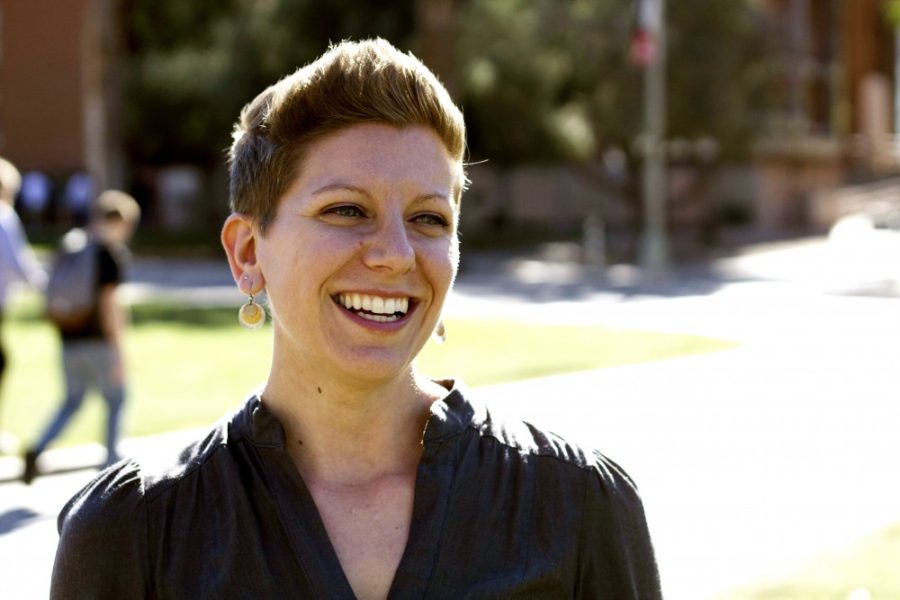UA’s fundraising campaign, Arizona NOW, set a goal to raise $1.5 billion dollars in 2010, and they recently attained it—two years ahead of schedule.
University of Arizona Foundation President and CEO John-Paul Roczniak said most donations received by Arizona NOW, had specific purposes in mind or specific departments in which the donor wanted their money to be utilized.
“The schools that have raised more money have been doing it longer, cultivating their donors for gifts,” Roczniak said. “It’s not about the college; it’s the case for support.”
Pamela Perry, associate dean of the undergraduate program for Eller College, knew most donations were designated to go to specific projects or causes and is grateful for the contributions made by donors to Eller that have taken form in new team rooms, study areas and the implementation of new technology.
If there was extra money that wasn’t designated, she said she’d vote for building renewal around campus with better classrooms and study areas.
The Integrative Nursing Faculty Fellowship program within the College of Nursing received assistance by foundational grants and gifts in 2015 and 2016, facilitated through the UA Foundation.
The Lovell Foundation has also had a long standing relationship with UA programs focused around integrative medicine and health.
RELATED: UA Cares kicks off campaign for community donations
“This program prepares faculty and educators to transform nursing education and practice using the science, theory and practice of integrative health, blending conventional and complementary health care,” said Mary Koithan, associate dean at the College of Nursing.
Like many university personnel, Koithan understands the importance and significance of campaigns like Arizona NOW because it allows a university to advance and continue growing.
“Personally, it brings me incredible satisfaction to be part of something that has so much meaning to so many people,” Koithan said.
Kate Worland, assistant director for development for the Eller College, said she first learned about Arizona NOW in 2014 when she began working for the college.
“Our alumni have responded to the campaign so well and have wanted to get re-engaged with the Eller College because they wanted to be part of Arizona NOW,” Worland said.
Many physical and tangible improvements have come from this campaign, but one of the more abstract priorities of this effort, mentioned by UA President Ann Weaver Hart, was that of improving academic instruction.
“Salary is just the basic thing you can do to improve instructional quality,” said Devon Kehler, a graduate associate teacher and student in the Rhetoric, Composition and the Teaching of English program. “Someone’s sense of worth, the amount their teaching labor is valued, will have an inherent influence in the way those instructors interact with students.”
Kehler believes creating instructional improvements would lead to more motivated educators and establish a crucial sense of worth, which in turn would lead educators to have more of an impact in the lives of their students.
“I think it’s always a good thing when you can bring together a community of over 100,000 donors that have pledged their support, their time and their money in ensuring that this university continues at a world-class level in instruction and research,” Kehler said. “I don’t think that signal of large-scale, critical-mass support for this school can be understated, because it’s enormous.”
Kehler said she believes the purpose behind this campaign is a beneficial one, but mentioned that, as a member of a public institution, she is always confronted with the question of why so much money needs to be raised by private investments when this practice has historically been utilized by private institutions.
“I think we have a symptom still that our state money isn’t coming at the level that it needs to, and this is a national trend,” Kehler said. “It’s a stark reminder that for public universities nationwide, there’s a real struggle to continue and fill in gaps where, previously, state tax revenues had been allocated.”
RELATED: Arizona Now looks to hit $1.5 billion benchmark ahead of schedule
The Marshall Foundation has been a long-time supporter and donor of the UA since the early 1930s when Louise Foucar Marshall, alongside her husband, created the foundation to help less-fortunate individuals obtain a higher education—something many people deem crucial to a successful future.
Jane McCollum, general manager for the Marshall Foundation, said the foundation sees the value in providing scholarships for in-state Arizona students because it opens up doors in ways that once seemed impossible. She said the scholarships facilitated by the Marshall Foundation do not cover all expenses but enable many more opportunities to become a reality for student.
McCollum said she believes a campaign like Arizona NOW is beneficial for the university’s mission.
“It helps you get new people to understand your mission,” McCollum said.
Follow Alex Gonzalez on Twitter.








